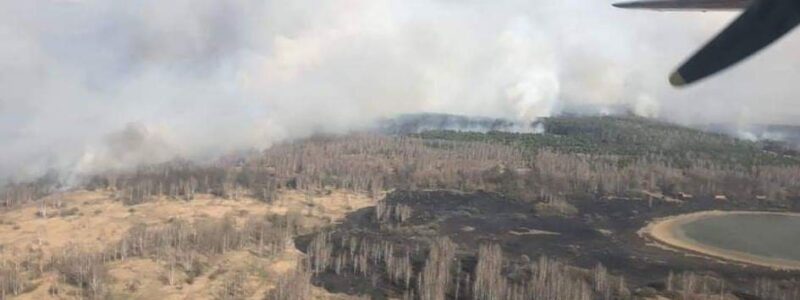
Fires near the Chornobyl nuclear power plant cannot be completely extinguished, and some increase in cesium concentrations has been recorded in Kyiv and west of Chornobyl, the International Nuclear Energy Agency (IAEA) said, citing the State Nuclear Regulatory Inspectorate of Ukraine.
“Ukraine’s regulatory authority informed the IAEA that firefighters were trying to extinguish wildfires near the Chornobyl NPP, an area which has seen such outbreaks also in previous years. The fire brigade from the town of Chornobyl has extinguished four fires, but there are still ongoing fires,” the IAEA said on its website on Wednesday in the evening.
According to the release, the local fire station does not currently have access to the electricity grid, the regulator said. In the meantime, the station is relying on diesel generators for power, for which fuel is required, it added.
The IAEA also draws attention to the fact that, in the Exclusion Zone, the regulator said radiation measurements are not currently being performed. It said slight increases in caesium air concentrations had been detected in Kyiv and at two NPP sites west of Chornobyl, but the regulator told the IAEA that they did not pose significant radiological concerns.
At the same time, in a video message posted on the IAEA website on Wednesday, IAEA Director General Rafael Mariano Grossi called the situation when major nuclear facilities operate in an armed conflict zone “dramatic and unique,” and noted that the situation remains distressing, and “the need to prevent a nuclear accident becomes more pressing with each day that passes.”
According to him, “intensive consultations have been ongoing for many days now, but a positive outcome still eludes us.”